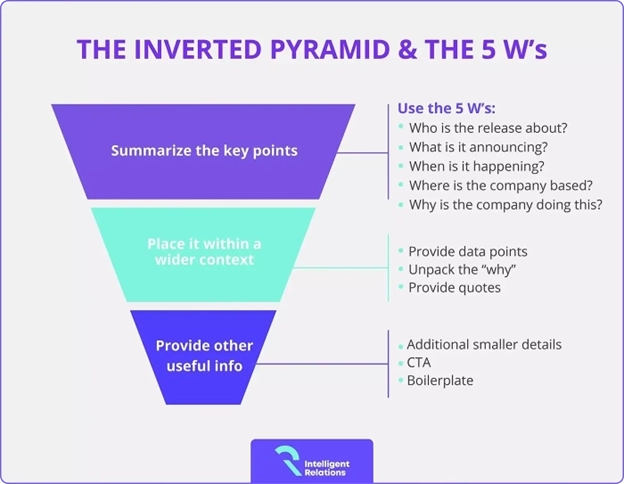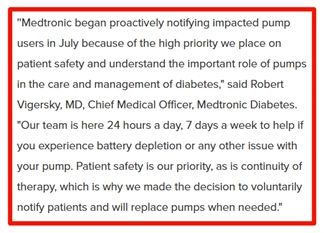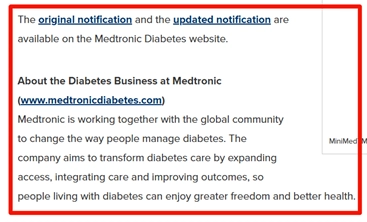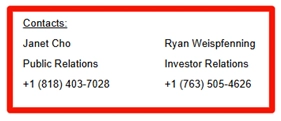A Guide to Crisis Communication Press Releases for Crisis Management [Examples + Tips]
- Home
- Intelligent Insights Blog
- A Guide to Crisis Communication Press Releases for Crisis Management [Examples + Tips]
When a company faces a public crisis, knowing where to begin is often overwhelming. Regardless of whether the issue is within the company’s control, the priority is clear — take decisive action to ease concerns and steer things back on course.
According to this 2024 Edelman study, 25% to 30% of businesses are ill-prepared to face a crisis. And we get it — no one wants to be in crisis mode.
But when disaster strikes, a preset plan and transparent communication are your lifelines. Being prepared and open about the situation eases concerns and reassures both customers and stakeholders.
Silence after bad press is not an option. The best way to kick off crisis management is with clear communication — that starts with a well-crafted press release.
In this guide, we’ll walk you through everything you need to know about drafting an effective crisis communication press release.
Here’s what’s covered:
- What is Crisis Management?
- What is a Crisis Communication Press Release?
- Types of Crisis Communication Press Releases
- How to Write and Format a Crisis Communication Press Release
- How to Send a Crisis Communication Press Release
Not sure your crisis management press release sets the right tone?
We can take a look. Book a free consultation with one of our PR experts. Crisis management is no joke and an extra set of eyes can go a long way.
What is Crisis Management?
Crisis management is the process of preparing for, responding to, and recovering from unexpected events or situations that pose a significant threat to an organization’s:
- Reputation
- Operations
- Finances
- Stakeholders
Crises range from natural disasters to product recalls, lawsuits, or PR scandals. Effective crisis management focuses on:
- Minimizing Damage
- Maintaining Stability
- Recovery
What is Crisis Communication?
A key component of crisis management is crisis communication. It refers to the strategic sharing of information during a crisis to:
- Address Concerns
- Manage Public Perception
- Maintain Stakeholder Trust
This includes customers, employees, investors, and the media. Transparent, empathetic, and timely communication helps clarify the organization’s actions, reduce misinformation, and reinforce accountability. This ultimately safeguards the organization’s reputation.
Pro Tip: Timing is everything. For example, steering clear of releasing controversial news or making bold statements near an election helps brands avoid unnecessary backlash.
Learn more about how to avoid disaster near an election here: 7 Ways to Avoid PR Disasters Near the Elections
What is a Crisis Communication Press Release?
A crisis communication press release is a statement that explains what the crisis is and what’s being done about it. This formal announcement is distributed to media outlets to take control of the narrative and mitigate damage.
What’s Included in a Crisis Communication Press Release?
The goal is to demonstrate transparency, reassure stakeholders, and show that the organization is taking the situation seriously while actively working toward a resolution.
This type of press release typically includes:
- Acknowledgment of the issue at hand.
- Relevant facts to provide context.
- An outline of the steps being taken to address the situation.
- A message of accountability and empathy to rebuild trust.
- Contact information for media inquiries.
When done right, a crisis communication press release plays a major role in mitigating damage and maintaining credibility amid disaster.
Pro Tip: A well-crafted press release is a powerful tool that shapes public perception and controls narratives. Whether you’re sharing good news or addressing a crisis, clear, concise communication builds trust and sparks media interest.
Want more general information on press releases? Read our article: What is a Press Release – Press Release Defined [+ Tips and Examples]
Types of Crisis Communication Press Releases
A crisis communication press release can take different forms depending on the situation. Here are the primary conditions that call for this type of announcement:
- Scandals: These might revolve around a company’s finances, such as tax errors, but could also involve staff members who, for example, abused their power.
- Court Cases: Many high-profile cases are picked up by mainstream media. Even if the charges are dropped, any court appearance can be damaging.
- Consumer and Stakeholder Reassurance: In some situations, you must calm stakeholders by emphasizing the organization’s commitment to resolving the predicament and preventing recurrence.
- Disasters: Perhaps a natural disaster affected your ability to offer products or services, such as an office or factory fire.
- Clarification of Facts: This provides accurate information to address rumors, misinformation, or speculation surrounding a crisis.
- Apology for Errors: A mistake that impacts brand reputation warrants a press release, for example, product contamination or an operations mishap.
- Addressing Accusations: This may be against senior management, or even against the business in general — false advertising, endangering employees, or unsafe products.
- Preventative Measures: You may need to highlight steps the organization is taking to mitigate future risks or similar issues.
- Progress Update: A crisis communication press release is often used to share ongoing developments in resolution, keeping stakeholders informed and engaged.
Pro Tip: Tailor your announcement to the crisis’s nature and audience to ensure the message aligns with the organization’s goals and values.
For more info on crafting an impactful press release, read our article: How to Write a Press Release for Great Results [Examples + Tips]
How to Write and Format a Crisis Communication Press Release
A crisis communication press is your chance to garner media attention, control the narrative of a situation, and recover brand reputation. To do this effectively, you need to follow key tips and proper formatting.
Write it Like a News Article
In a press release, you want to communicate the most important information right away with details of lesser importance comprising the body of the announcement. This is known as the Inverted Pyramid structure and is used to clearly and concisely cover The 5 Ws.

Write it in AP Style
Writing your press release in AP style is important for ensuring professionalism and credibility. As the standard format for most media outlets, AP style makes your content easier for journalists to use directly. This saves them time and increases the likelihood of coverage.
It also ensures consistency in:
- Grammar
- Punctuation
- Formatting
An AP style press release presents your organization as polished and reliable.
Pro Tip: Sticking to this standard reflects your understanding of industry expectations, building trust with your audience and the media.
Learn more about AP style press releases here: How to Write an AP Style Press Release 2024 (+ Examples and Tips)
Formatting a Crisis Communication Announcement with Examples
Proper formatting ensures clarity and professionalism. Use a clear headline, a concise opening paragraph with the key details, and short, focused paragraphs to keep the message easy to read.
Let’s look at this recent Medtronic crisis communication announcement notifying customers of potential product risks:
- Headline: Include a clear, concise title summarizing the issue.

2. Introduction: Craft a concise opening paragraph that covers the 5 Ws. This example is slightly longer than the average announcement opening, but a longer intro is sometimes necessary to cover all of the main points.

3. Second and Third Paragraphs: Expand on the main points outlined in the opening paragraph.

4. Quotes: Include a quote or two from notable company members or experts to add credibility and reassurance that the crisis is being effectively managed.

5. Additional Paragraphs: Use additional paragraphs to include any extra information relevant to the announcement.

6. Boilerplate: Conclude with an “About” section that explains the history of the company, its mission, and a call to action. Try to keep it under 100 words.

7. Contact Info: Below the boilerplate, include the relevant contact information.

How to Send a Crisis Communication Press Release
Once you’ve double-checked and finalized your announcement, it’s time to send it. Sending a crisis communication press release requires careful timing, distribution, and follow-up.
Press Release Timing
Timing is critical when issuing a press release, especially during a crisis. Aim to release it as soon as possible after the issue arises to demonstrate transparency and control.
- Avoid non-business hours, weekends, or major competing news cycles to ensure better visibility and media pickup.
- If possible, coordinate with internal teams to choose a time that aligns with your audience’s availability and media deadlines.
- Don’t forget to follow up. Be available to respond to inquiries, clarify details, and provide interviews as needed. This builds trust and helps ensure accurate media coverage.
With time considered, there are really two main options for submission:
1. Use a Press Release Distribution Service
Using a press release distribution service saves time by automating the distribution process and sending your announcement to a wide range of media outlets. Many reputable services offer data on things like:
- Views
- Pickups
- Engagement
This helps measure the impact of your press release. However, there are some disadvantages to this option. Distribution services are often expensive, and the lack of personalization means your news is likely to get lost in a sea of hopeful pitches.
2. Email Journalists Directly
The tailored pitches of this more personalized approach increase the likelihood of engagement and coverage. Targeted outreach allows you to focus on the most relevant journalists and build long-term media relationships in the process.
The downside to direct contact is that crafting individual pitches and searching for relevant journalists takes time. Your reach is also limited, and there’s no guarantee that your news will get picked up.
Pro Tip: Use a distribution service for broad announcements requiring wide visibility.
Opt for direct submissions when you want personalized engagement or are targeting niche audiences. A combination of both methods maximizes impact.
For more information on how to send a press release, read our article: The Ultimate Press Release Submission Guide How to Send a Press Release 2025: The Ultimate Guide (+ Examples)
Wrapping Up
In the face of a crisis, clear and proactive communication is the difference between escalating chaos and rebuilding trust. A well-crafted crisis communication press release is a powerful tool to address concerns, clarify facts, and reassure stakeholders that your organization is taking responsible action.
By following best practices — empathetic messaging, professional formatting, and timely release — you control the narrative and set the stage for recovery. Remember, how you respond in a crisis reflects your organization’s values and resilience.
With the right approach, even the toughest challenges become opportunities to demonstrate accountability and strengthen relationships.

